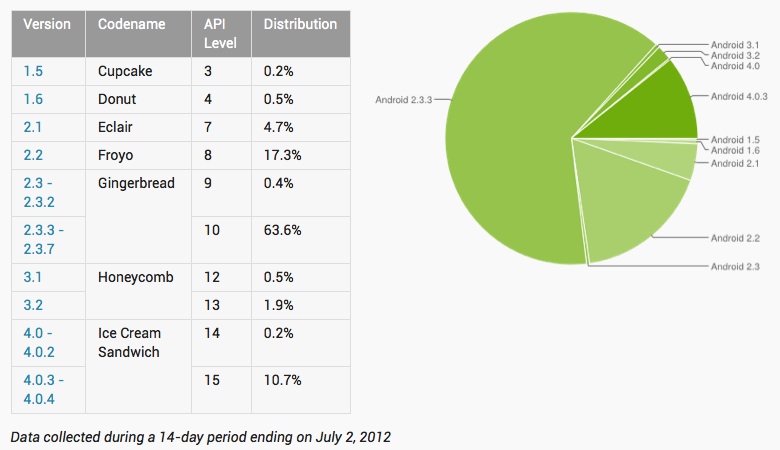testsetset

While the Android buzz is now firmly focused on the recently unveiled Jelly Bean, the previous major update, Android 4.0 Ice Cream Sandwich, has finally reached double-digit penetration in the market.
It’s a bittersweet victory, though, as it took 8.5 months since Android 4.0’s release to scrape together 10.9 percent of the Android market. Meanwhile, the majority of Android users (64 percent) are running the 15-month old Gingerbread update.
The latest statistics, gathered at Google’s Android developers website, won’t do much to satisfy critics who say that Android is horribly fragmented. Google has historically avoided forcing Android updates on device manufacturers, who usually need several months to tweak the software for their products.
June 5th: The AI Audit in NYC
Join us next week in NYC to engage with top executive leaders, delving into strategies for auditing AI models to ensure fairness, optimal performance, and ethical compliance across diverse organizations. Secure your attendance for this exclusive invite-only event.
At least the adoption of Android 4.0 seems to be speeding up. Last month, Google reported that only 7.1 percent of devices were running Android 4.0.
Come next month, Google will add Android 4.1 Jelly Bean statistics to its market report. That update will officially hit Nexus devices later this month, and it’ll give us some idea of how well Google’s new Nexus 7 tablet sells.
![]() Design is determining the winners in everything mobile. The most successful players are focusing on one thing: How to make products, services, and devices as compelling and delightful as possible – visually, and experientially. MobileBeat 2012, July 10-11 in San Francisco , is assembling the most elite minds to debate how UI/UX is transforming every aspect of the mobile economy, and where the opportunities lie. Register here.
Design is determining the winners in everything mobile. The most successful players are focusing on one thing: How to make products, services, and devices as compelling and delightful as possible – visually, and experientially. MobileBeat 2012, July 10-11 in San Francisco , is assembling the most elite minds to debate how UI/UX is transforming every aspect of the mobile economy, and where the opportunities lie. Register here.

